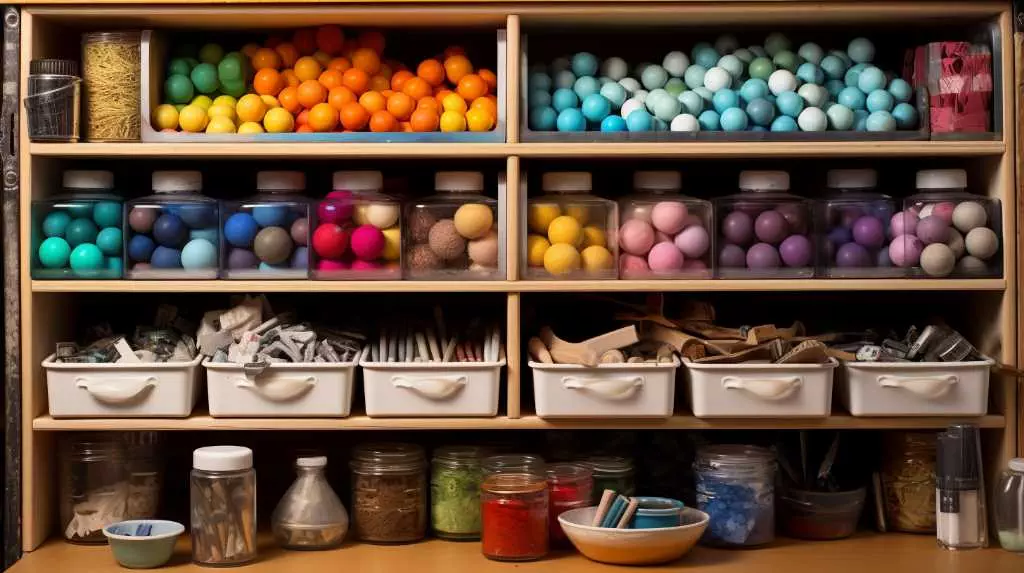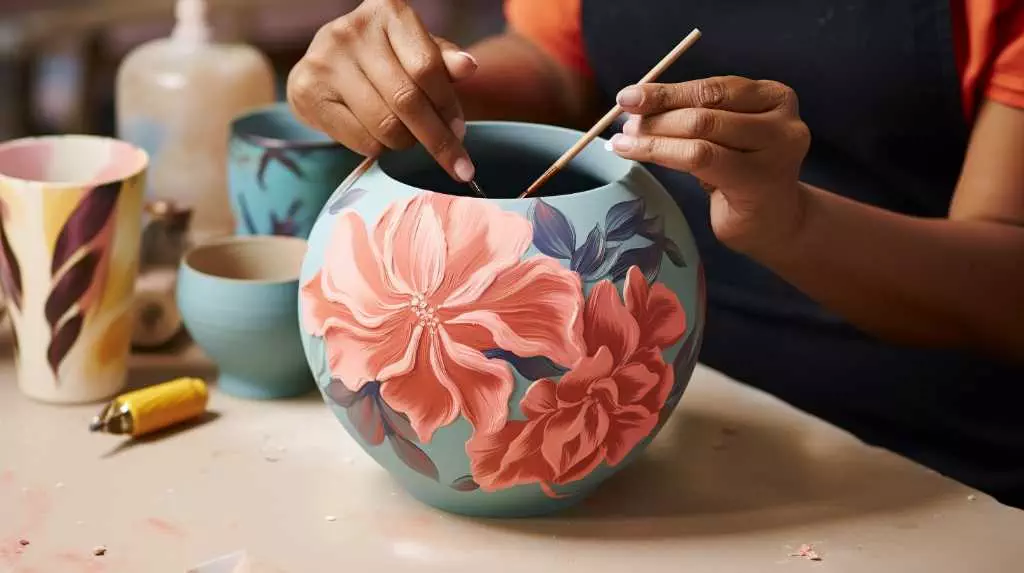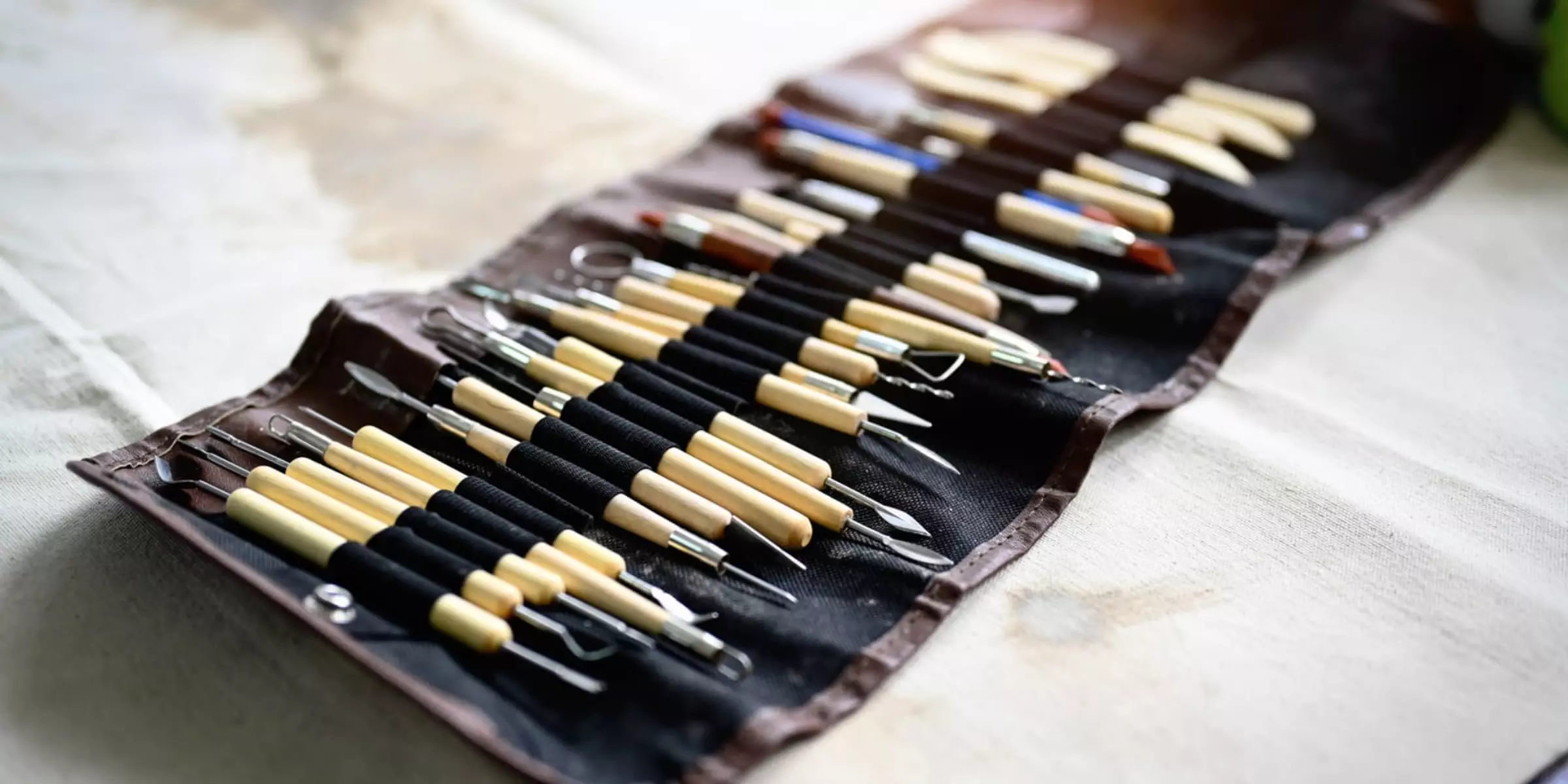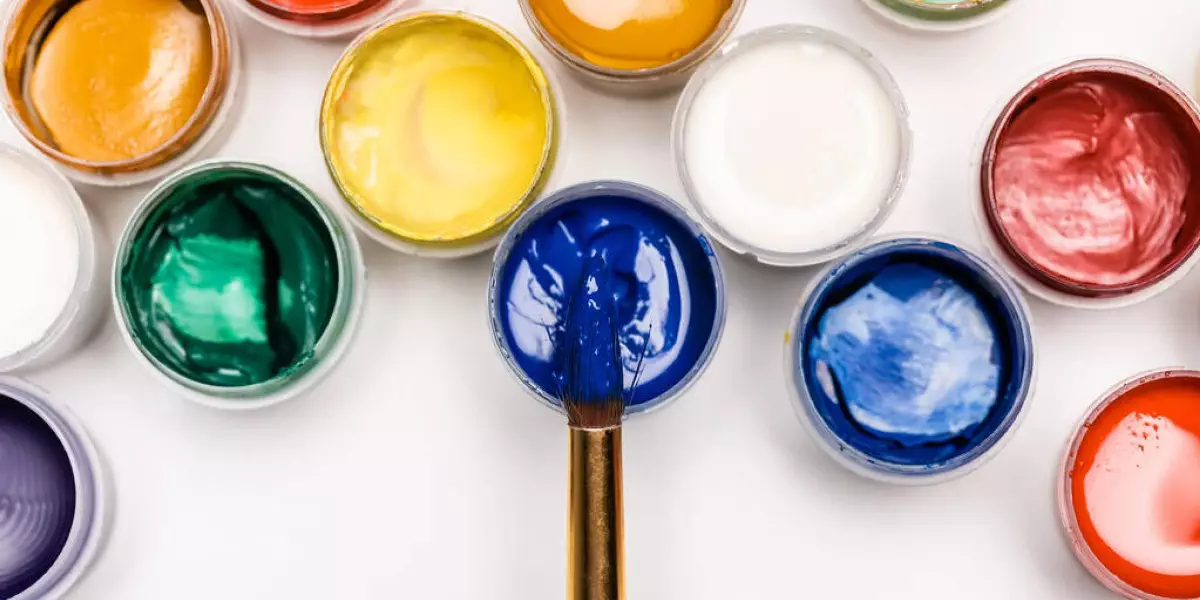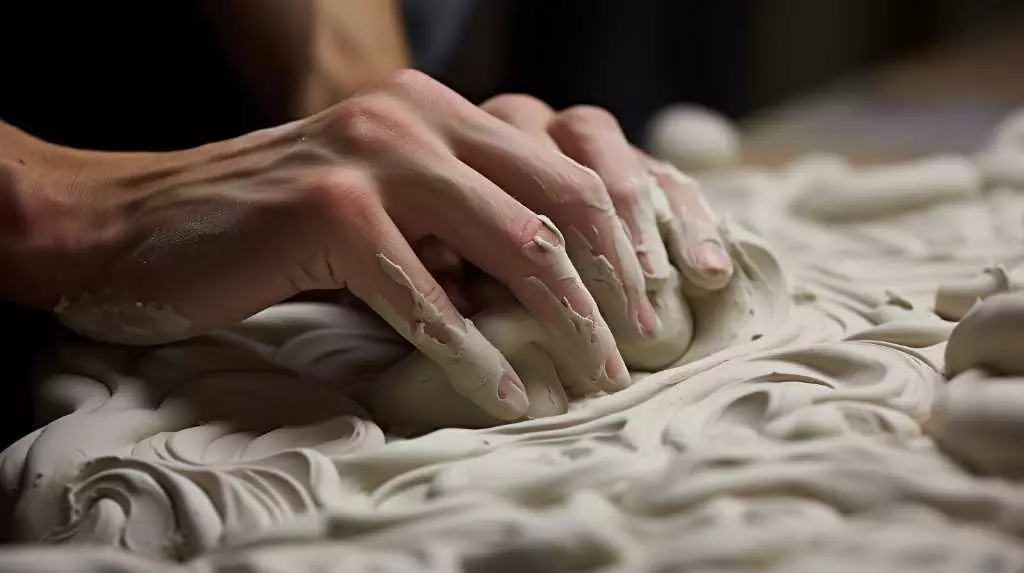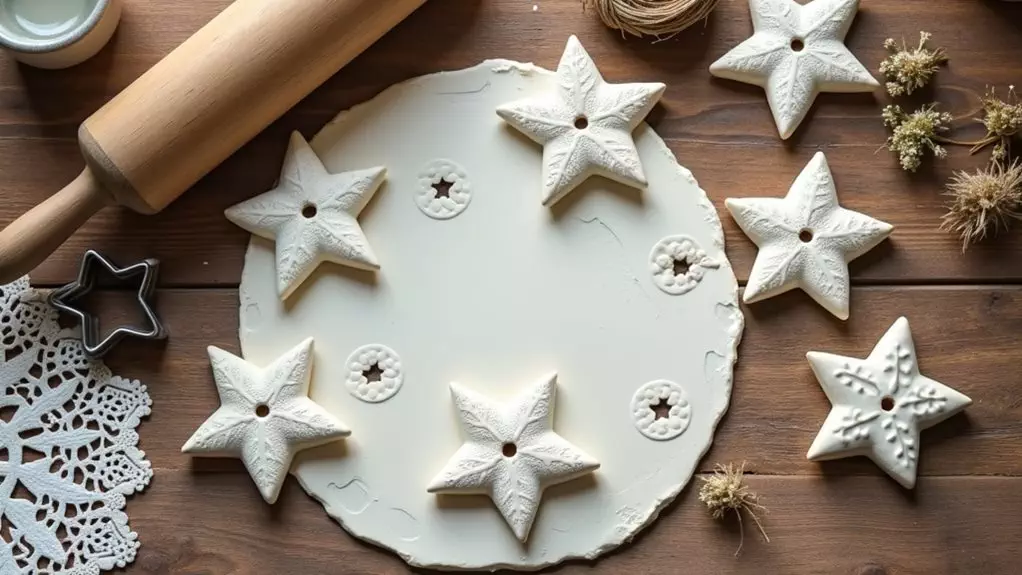So you’ve got some unused air dry clay lying around, huh? Well, fear not, my freedom-loving friend! I’ve got just the tips and tricks you need to store that precious clay like a pro.
From moisture control to temperature considerations, this article will guide you through the ins and outs of proper storage techniques.
Get ready to keep your clay in tip-top shape, because artistic freedom should never be compromised, even when it comes to storing unused clay!
Storage Tips
To properly store your unused air dry clay, start by placing it in an airtight container. Airtight containers are essential for preserving the quality and moisture content of the clay. When exposed to air, air dry clay can dry out and become brittle, rendering it unusable. By sealing it in an airtight container, you create a controlled environment that slows down the drying process and keeps the clay pliable for longer periods.
Additionally, airtight containers prevent dust, dirt, and other contaminants from settling on the clay’s surface, maintaining its cleanliness. Choose containers that are specifically designed for clay preservation, such as plastic containers with tightly fitting lids or resealable bags.
Remember to label each container with the date of storage to keep track of its freshness. By following these clay preservation techniques, you can ensure that your unused air dry clay remains in optimal condition, ready for your artistic endeavors.
Shelf Life
To determine the shelf life of your unused air dry clay, you need to consider various factors that can affect its longevity. Clay preservation is crucial if you want your clay to remain usable over an extended period. Here are three key factors to keep in mind:
- Moisture Control: Properly sealing your clay is essential to prevent it from drying out too quickly or becoming overly saturated. Use airtight containers or plastic bags with a moisture-absorbing material, such as silica gel, to maintain the ideal moisture level.
- Temperature Stability: Extreme temperatures can negatively impact the clay’s texture and hardening process. Store your clay in a cool, dry place away from direct sunlight and heat sources to maintain its quality.
- Contamination Prevention: Keep your clay separate from other substances that may introduce foreign materials or chemicals. This includes storing it away from dust, dirt, and other pollutants that could compromise its integrity.
Moisture Control
When it comes to storing unused air dry clay, proper moisture control is essential. Clay storage tips include keeping the clay in an airtight container or plastic bag to prevent moisture loss.
Additionally, preventing clay dryness can be achieved by adding a small damp sponge or water-soaked paper towel in the container to maintain the clay’s moisture content.
Understanding the relationship between humidity and clay preservation is crucial, as excessive humidity can cause the clay to become sticky or moldy, while low humidity can lead to drying and cracking.
Clay Storage Tips
You can effectively control moisture when storing your unused air dry clay. Here are some clay storage tips to help you maintain the quality of your clay and ensure it stays in perfect condition for your next project:
- Seal it in an airtight container: Use a plastic or glass container with a tight-fitting lid to prevent any air or moisture from entering.
- Add a moisture-absorbing agent: Place a small packet of silica gel or a piece of chalk in the container to absorb excess moisture and keep the clay dry.
- Store it in a cool, dry place: Avoid storing the clay in areas with high humidity or direct sunlight, as these conditions can cause the clay to become sticky or crack.
By following these clay storage tips, you can ensure that your unused air dry clay remains in optimal condition, ready for your next creative endeavor.
Enjoy the freedom of knowing your clay is well-preserved and ready to be molded into any form you desire.
Preventing Clay Dryness
Keep your air dry clay from becoming too dry by implementing proper moisture control techniques. Clay preservation techniques are essential for preventing clay cracking and maintaining its workability.
To ensure optimal moisture levels, store your air dry clay in an airtight container or sealable plastic bag. This will help to prevent moisture loss and keep the clay soft and pliable. Additionally, you can place a damp cloth or sponge inside the container to provide a source of moisture.
Regularly check the clay for dryness and spritz it lightly with water if needed. Avoid exposing the clay to direct sunlight or extreme temperatures, as this can cause it to dry out quickly.
Humidity and Clay Preservation
To maintain the optimal moisture levels of your air dry clay and ensure its preservation, it’s important to control the humidity in which it’s stored. Proper humidity control is essential to prevent clay from becoming too dry or too moist, which can lead to cracking, mold growth, or other forms of damage.
Here are three clay preservation techniques to help you prevent clay moldiness:
- Use airtight containers: Seal your clay in airtight containers to create a barrier against external moisture. This will help maintain a consistent humidity level and prevent the clay from drying out or absorbing excess moisture.
- Use moisture-absorbing materials: Place moisture-absorbing materials, such as silica gel packs or rice, in the storage containers to absorb any excess moisture and prevent mold growth.
- Store in a cool and dry place: Find a cool and dry storage area for your clay, away from direct sunlight or sources of heat. Heat and sunlight can accelerate the drying process and lead to clay becoming brittle.
Container Types
When it comes to storing unused air dry clay, choosing the right container is crucial.
Plastic and glass containers are the two main options to consider. Plastic containers are lightweight and more affordable, while glass containers offer better visibility and durability.
Sealability is another important factor to consider, as it helps to prevent moisture from entering the container and drying out the clay.
Lastly, the size of the container should be chosen based on the amount of clay you need to store, ensuring that it fits comfortably without excess air space.
Plastic Vs. Glass
Store your unused air dry clay in either a plastic container or a glass container. Both options have their advantages and it ultimately depends on your personal preference.
- Plastic containers are lightweight and durable, making them easy to transport and less likely to break. They often come with airtight seals, which helps to preserve the freshness of your clay and prevent it from drying out. Plastic containers also offer the benefit of being transparent, allowing you to easily see the contents inside.
- Glass containers, on the other hand, have a more elegant and artistic appeal. They’re also airtight and can effectively keep your air dry clay moist for extended periods. Glass containers are known for their non-reactive properties, which means they won’t interact with the clay and alter its composition. Additionally, glass containers are environmentally friendly and can be reused or recycled.
Whichever type of container you choose, ensure that it’s clean and dry before storing your air dry clay.
Sealability Options
You can choose from various container types to ensure the sealability of your air dry clay, such as plastic or glass.
When considering clay preservation techniques and preserving clay freshness, the container you choose plays a crucial role.
Plastic containers are a popular choice due to their affordability, durability, and lightweight nature. They provide an airtight seal, preventing the air from drying out the clay.
Glass containers, on the other hand, offer a more elegant and artistic option. They’re non-reactive and provide airtight storage, ensuring the clay remains fresh and workable for longer periods. Additionally, glass containers are transparent, allowing you to easily see and assess the condition of the clay without opening the container.
Whichever container type you choose, make sure it has a secure lid or closure mechanism to maintain the seal and preserve the quality of your air dry clay.
Size Considerations
Choose a container size that accommodates the amount of air dry clay you have while allowing for proper sealability. When considering container options for clay preservation, there are a few factors to keep in mind.
- Adequate Space: Select a container that provides enough room for your clay without causing it to become compressed or deformed. This ensures that your clay remains in its original shape and texture, ready for your next creative project.
- Easy Accessibility: Opt for a container that allows you to easily access your clay whenever inspiration strikes. A container with a wide opening or a removable lid will provide the freedom to effortlessly retrieve and work with your clay.
- Secure Closure: Ensure that your chosen container has a reliable seal to protect your clay from drying out or becoming contaminated. Look for options with airtight lids or snap-on covers to maintain the freshness and pliability of your clay for longer periods.
Consider these container options to preserve your air dry clay effectively and enjoy the freedom of artistic expression whenever you desire.
Temperature Considerations
Maintaining optimal temperature conditions is crucial for preserving the quality of your unused air dry clay. Temperature fluctuations can affect the moisture content and texture of the clay, leading to cracking or drying out too quickly.
To ensure the longevity of your clay, it’s important to store it in a cool, dry place. Avoid exposing it to extreme heat or cold, as this can cause the clay to become brittle or soften.
Humidity control is also essential in preventing the clay from absorbing moisture from the air, which can make it sticky and difficult to work with. To achieve this, consider using airtight containers or wrapping the clay in plastic wrap before storing it.
Proper Sealing Techniques
To properly seal your unused air dry clay, start by using airtight containers or plastic wrap. This is essential for moisture prevention, as air dry clay can easily become dry and crumbly if exposed to air for too long.
Airtight containers create a barrier that keeps the clay moist and workable, allowing you the freedom to use it whenever inspiration strikes. Plastic wrap is also a great option for sealing your clay, as it tightly covers the surface, preventing any moisture from escaping.
Another effective technique is to store your clay in a ziplock bag, squeezing out any excess air before sealing it. This method ensures that your clay remains fresh and pliable, ready to be molded into your next masterpiece.
Labeling and Organization
To keep your unused air dry clay organized and easily accessible, it’s important to label and categorize your supplies. By implementing effective storage techniques and proper clay preservation methods, you can ensure that your clay remains in good condition for future use.
Start by labeling each container or bag that holds your clay. Use clear, descriptive labels that indicate the type and color of clay inside. This will make it easier for you to locate specific clay when needed. Additionally, consider categorizing your clay based on its properties, such as hardness or texture. This will further streamline your organization system.
When storing your clay, keep it in a cool and dry place to prevent it from drying out prematurely. Avoid exposing it to direct sunlight or extreme temperatures, as this can affect its consistency and quality. Using airtight containers or resealable bags can also help to preserve the moisture content of the clay.
By implementing these labeling and organization techniques, you can ensure that your unused air dry clay remains in optimal condition, ready for your next creative endeavor.
Avoiding Contaminants
To ensure the quality and integrity of your unused air dry clay, take precautions to avoid contaminants that may affect its composition and usability. Here are some tips to help you avoid contamination and prevent mold growth:
- Store your air dry clay in a clean and dry container with a tight-fitting lid. This will prevent dust, dirt, and moisture from getting into the clay and causing contamination.
- Keep your clay away from direct sunlight and extreme temperatures. Exposure to heat and light can degrade the clay and make it more susceptible to mold growth.
- Avoid cross-contamination by using clean tools and surfaces when working with your air dry clay. This will help prevent the introduction of foreign substances that can compromise the clay’s integrity.
Conclusion
In conclusion, properly storing unused air dry clay is essential to ensure its longevity and usability. By following the storage tips outlined in this article, such as controlling moisture, using appropriate containers, and sealing techniques, you can preserve the clay’s quality for future use.
Remember to label and organize your stored clay to avoid confusion and contamination. With these measures in place, you can unleash your creativity whenever inspiration strikes, knowing your clay is ready and waiting.

